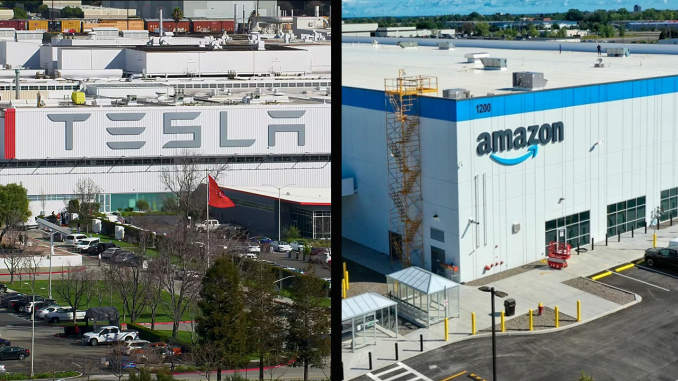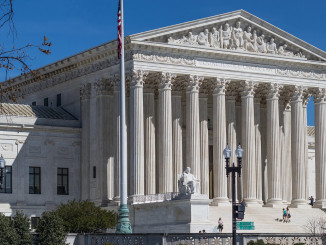
Workers at big non-union corporations like Tesla and Amazon have been trying to organize unions for the last several years. Some of them have been fired in order to scare the rest of the workers away from the effort. In spite of the firings, however, workers at these companies continue to organize. This alarms the bosses, so they are turning to more and more extreme tactics.
U.S. labor law prohibits bosses from disciplining workers for joining a union. The National Labor Relations Board (NLRB) is an agency of the U.S. government that has the power to stop employers from violating the law. The NLRB can order the boss to rehire workers fired for union activity along with full backpay and benefits for the time they were illegally fired. However, bosses have the right to appeal NLRB decisions to the Federal Courts, a process which stalls the NLRB from enforcing workers’ legal rights, often for years.
Amazon and Tesla are appealing to overturn NLRB orders to rehire workers they fired illegally. Bosses know that delays in enforcing workers’ legal rights is often enough to stop unionization even if a court makes a final decision requiring the company to rehire the workers it fired to discourage unionization. Now, the bosses have added a new twist. They argue that the whole NLRB system is unconstitutional. They demand that the courts take away the NLRB’s power to order corporations to stop firing workers who are active in building a union, or that the court’s abolish the NLRB altogether.
What these companies want goes against almost 100 years of legal precedent. But their appeals will be heard by the same reactionary judges who overturned the right to abortion after fifty years of precedent. So right-wing judges may wipe out or significantly restrict the NLRB’s ability to defend workers’ legal rights.
If this happens, will it be a big victory for the bosses? Not really.
The legal rights promised by New Deal-era labor laws have never been of much help to workers. The major union drives of 1930s were successful even though the courts didn’t recognize the workers’ union rights at all. Workers built their unions with mass picket lines and sit-down strikes, usually in defiance of court injunctions and police attacks. It was only in 1935, after the workers had already built unions in the auto industry, the steel plants and scores of other industries, that the courts acknowledged that workers had the legal right to organize and to strike. The NLRB was established in an effort to convince workers they didn’t need to take to the streets or occupy plants in order to make the bosses recognize unions. Almost immediately after that, the courts began to whittle these rights down, for example, making the sit-down strike illegal in 1939.
Over the decades, little by little, politicians from both parties and judges more interested in protecting the bosses’ authority have curtailed enforcement of our legal rights to organize at work. If workers at companies like Amazon and Tesla succeed in building unions, it will be because they have discovered that the power to deal with the boss comes from their organized ability to stop production. In that case, what the courts do or don’t decide about the NLRB won’t matter much at all.




